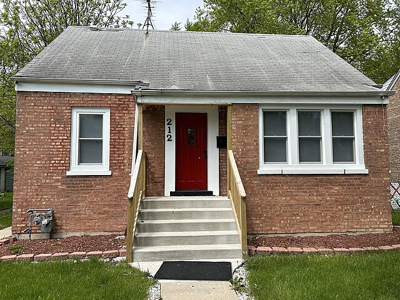In the quiet suburb of Dolton, Illinois, a modest brick house has suddenly become the center of international attention. This unassuming residence, once home to a young Robert Prevost, recently nominated as Pope, has become a symbol of hope and pride for a community more accustomed to headlines about economic hardship than papal history.
Yolanda Hannon, a lifelong Dolton resident, visited the house with her family and was moved by its new significance. She told Block Club Chicago, “Many people have talked badly about Dolton, calling it violent or dangerous. I think people will see what this community is about now, how tight-knit and hardworking we are.”
The Prevost family’s house is typical of many homes built in the area—small, straightforward, and designed for regular working folks seeking a comfortable place to raise their families. For years, it blended into the neighborhood, its history known only to locals and parishioners at the nearby Catholic church. Robert’s childhood was marked by the rhythms of small-town life: school, chores, and Sunday Mass. Neighbors recall him as a polite boy, often seen helping his parents or quietly reading on the porch.
One of Pope Leo’s older brothers, Louis Prevost told NBC News, “It’s just mind-blowing that my brother was elected pope. We’ve kind of always known he was special. We teased him about being pope when he was 6 years old.”
Everything changed when Cardinal Prevost was unexpectedly elected Pope Leo XIV. Almost overnight, the house became a destination for journalists, pilgrims, and the curious. Visitors now pause on the sidewalk, snapping photos and sharing stories. Some leave flowers or notes of congratulations, while others want to witness the place where the first American-born pope began his journey.
Ironically, the house was on the market when the papal election occurred. What had been a slow-moving real estate listing quickly became a hot commodity. Offers poured in, and the property was temporarily withdrawn from the market as its value and significance were reconsidered. The owner, caught off guard by global attention, is now weighing whether to sell, preserve, or donate the home for a higher purpose.
For Dolton, the papal connection is more than a curiosity; it is a point of civic pride. Local officials and residents are exploring ways to honor their famous former neighbor. Ideas range from installing a commemorative plaque to converting the house into a museum or community center. Some hope the attention will spark renewed investment in the area, while others see it as a chance to tell a more positive story about Dolton.
The fate of Pope Leo XIV’s childhood home remains uncertain. Will it become a permanent landmark, a pilgrimage site, or return to private ownership? Whatever happens, its story is now woven into the fabric of Dolton’s identity. For many, the house is a reminder that greatness can emerge from the most ordinary places.
The modest home in Dolton is more than just bricks and mortar; it’s a testament to the power of humble beginnings. As the world approaches this quiet street, Dolton finds itself at the crossroads of history, community, and faith, ready to embrace its unique place on the world stage.







(0) comments
Welcome to the discussion.
Log In
Keep it Clean. Please avoid obscene, vulgar, lewd, racist or sexually-oriented language.
PLEASE TURN OFF YOUR CAPS LOCK.
Don't Threaten. Threats of harming another person will not be tolerated.
Be Truthful. Don't knowingly lie about anyone or anything.
Be Nice. No racism, sexism or any sort of -ism that is degrading to another person.
Be Proactive. Use the 'Report' link on each comment to let us know of abusive posts.
Share with Us. We'd love to hear eyewitness accounts, the history behind an article.